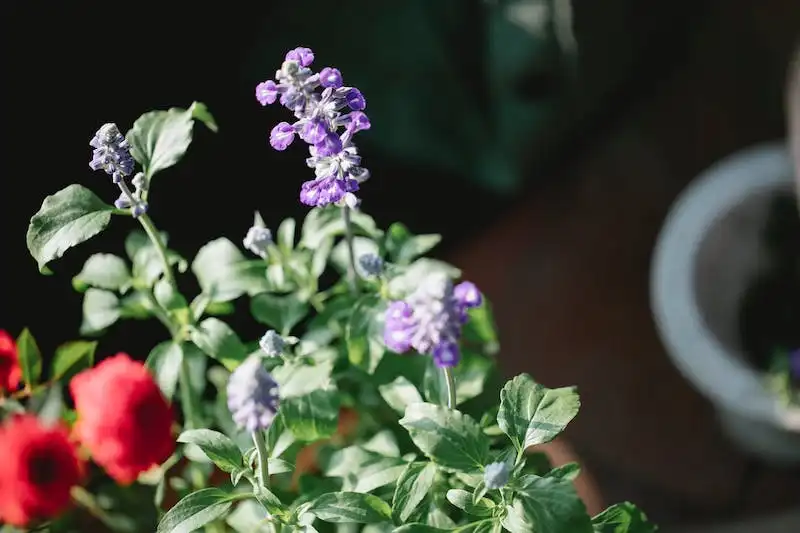Many gardeners have asked how to grow rosemary from cuttings, as it is one of the most popular herbs to work with. If you’re curious about growing your own rosemary plants, you’re in luck! In this step-by-step guide, we will teach you how to propagate rosemary from cuttings. With a little time, patience, and preparation, you can have your own beautiful rosemary plants thriving in no time.
The first step in growing rosemary from cuttings is to select the best mother plant. Look for a healthy rosemary plant with strong stems and vibrant shoots. Make sure to ask for permission if the plant is not yours. Once you have your mother plant, it’s time to prepare the cuttings. Using sharp pruners, remove a few lower stems that are about 3-4 inches long. Trim off any leaves from the lower half of the stems, as they may interfere with rooting.
Next, prepare a container with well-draining soil. You can use a pot or a garden bed, depending on your preference and available space. If you’re using a pot, make sure it has drainage holes at the bottom to prevent water-logging. Prepare the soil by removing any weeds or debris and flattening it with your hand.
Before placing the rosemary cuttings in the prepared soil, it’s important to prepare them for rooting. Dip the lower end of each cutting into a rooting hormone powder. This will help stimulate root growth and increase the chances of success. Gently tap off any excess powder.
Now, it’s time to place the rosemary cuttings into the soil. Make a small hole in the soil with your finger or a pencil and insert each cutting, burying it about half an inch into the soil. Space the cuttings about 3-4 inches apart to give them room to grow. Water the cuttings thoroughly, but make sure not to over-water as rosemary prefers drier conditions.
Once the rosemary cuttings are in place, it’s important to provide them with the right conditions to root and grow. Choose a spot that receives at least 6 hours of sunlight per day. If you live in a climate with frost, it’s best to keep the potted cuttings indoors or in a greenhouse until they are ready to be transplanted into the garden.
After a few weeks, the cuttings should have developed roots and new growth. You can gently tug on the cuttings to check if they are rooted. If there is resistance, it means the cuttings have successfully rooted and can be transplanted into larger pots or the garden. If not, give them a little more time before checking again.
It’s worth noting that rosemary can be a little picky about its growing conditions. It prefers well-draining soil and doesn’t like to stay too wet. Over-watering or planting in heavy, clayey soil can lead to root rot and poor growth. So, be sure to water your rosemary plants sparingly and provide them with the right soil conditions.
In conclusion, growing rosemary from cuttings is easy and rewarding. With a few simple steps, you can propagate your own rosemary plants and enjoy their fragrant leaves for various culinary and medicinal uses. So, don’t hesitate to give it a try and start your own rosemary garden today!
FAQs about Growing Rosemary from Cuttings:
Q: How long does it take for rosemary cuttings to root?
A: It usually takes about 2-3 weeks for rosemary cuttings to develop roots.
Q: Can I use potatoes to root rosemary cuttings?
A: Yes, some gardeners have had success using potatoes to root rosemary cuttings. It’s worth a try if you don’t have access to rooting hormone or prefer a more natural method.
Q: How do I know if my rosemary cuttings are ready to be transplanted?
A: When the cuttings have developed roots and new growth, they are ready to be transplanted into larger pots or the garden.
Q: Can I grow rosemary from seeds instead of cuttings?
A: Yes, you can grow rosemary from seeds, but it takes longer and is usually less successful compared to growing from cuttings.
Propagating Rosemary From Cuttings, Seeds & More
Propagating From Cuttings
Propagating rosemary from cuttings is a popular and reliable method. Start by choosing a healthy, mature rosemary plant to take cuttings from. It is best to take cuttings in the spring or early summer when the plant is actively growing.
Prepare a well-draining soil mix in a container or the garden bed where you plan to root the cuttings. You can also use a homemade or store-bought rooting hormone to improve the chances of successful rooting.
Take several cuttings from the mother plant, making sure each cutting has at least one node present. Remove the bottom leaves from the cuttings, leaving only a few at the top. This will help the cuttings to conserve moisture and develop roots more easily.
Dip the cut ends of the stems in water and then in the rooting hormone. Gently insert the cuttings into the soil, making sure they are well spaced and not overcrowded. Press the soil around the cuttings to secure them in place.
Keep the soil consistently moist but not waterlogged. You can cover the container or bed with plastic to create a greenhouse effect and increase humidity. This will help the cuttings to root and emerge as new rosemary plants.
Propagating From Seeds
Another way to propagate rosemary is by starting from seeds. This method is slower compared to cuttings, but it can be more rewarding if you enjoy the process of growing plants from seed.
Start by preparing a well-draining soil mix and filling small pots or seed trays. Moisten the soil before sowing the rosemary seeds. Place the seeds on the soil surface and lightly press them into the soil, but don’t cover them completely as they need light to germinate.
Keep the soil consistently moist and provide the seeds with sufficient light. It is best to place the pots or trays in a warm and sunny location, such as a windowsill.
Germination can take anywhere from two to four weeks. Once the seedlings have developed their second set of true leaves, you can transplant them into individual pots or directly into the garden bed.
Other Propagation Methods
In addition to cuttings and seeds, rosemary can also be propagated through layering and air-layering. Layering involves burying a low-growing branch in soil to promote root growth, while air-layering involves creating a groove in a mature stem, applying rooting hormone, and covering it with moist sphagnum moss.
Each propagation method has its own advantages and drawbacks, so choose the one that fits your needs and preferences. Whether you decide to grow rosemary from cuttings, seeds, or another method, with proper care and attention, you can enjoy a beautiful and productive rosemary shrub in your garden!
What Is Plant Propagation
Plant propagation is the process of creating new plants from existing ones. It is a way of reproducing plants either sexually or asexually, depending on the method used. Asexual propagation methods involve taking a cutting or division from an existing plant and growing it into a new plant. Sexual propagation, on the other hand, involves using seeds to grow new plants.
One of the easiest and most common methods of plant propagation is taking cuttings. This involves cutting a piece of stem from a healthy mother plant and placing it in soil or water to encourage root growth. The cutting is usually taken from the lower portion of the stem, just below a node (where a leaf emerges). It is important to keep the cutting moist and provide it with plenty of light to encourage root development.
When taking cuttings, it is important to use a sharp, clean knife or pruners to make a clean cut. The cutting should be about 6 inches long, with at least 2 or 3 sets of leaves. To promote root growth, it is common practice to remove the leaves from the lower half of the cutting and flatten the remaining leaves to reduce water loss. The cutting can then be planted in soil, making sure to bury the node and leave the top few leaves exposed.
Patience is key when propagating plants from cuttings, as it can take several weeks or even months for roots to form. During this time, it is important to keep the cutting hydrated by watering it regularly, but not overwatering. Once the cutting has established roots and new growth begins to emerge, it can be transplanted to a larger pot or directly into the garden.
Plant propagation is a brilliant way to grow new plants that are genetically identical to their parent plants. It allows gardeners to produce large quantities of plants for personal use, as well as for sharing with friends and other gardeners. With a little bit of knowledge and practice, anyone can become a master of plant propagation and expand their garden collection.
Methods For Propagating Rosemary
There are several methods for propagating rosemary, but the most common ones include taking cuttings and using seeds. Each method has its own advantages and it’s best to choose the one that suits your needs and preferences.
- Propagating Rosemary from Cuttings: This method is preferred by many gardeners because it allows you to reproduce a plant with the exact characteristics of the mother plant. Here’s how to do it:
- Select a mature rosemary plant with healthy and well-developed stems.
- Prepare a container with well-draining soil.
- Using clean and sharp pruners, remove a 4-8 inch long stem from the plant, making sure to cut just below a leaf node.
- Remove the lower leaves from the stem, leaving only a few leaves at the top.
- Dip the cut end of the stem in a rooting hormone, if desired.
- Push the prepared stem into the soil in the container, making sure to bury a few inches of the stem.
- Water the cutting and place it in a warm and bright location, avoiding direct sunlight.
- Monitor the moisture level of the soil and water as needed to keep it moist but not waterlogged.
- After a few weeks, the cutting should develop roots. Once the roots are well-established, you can transplant the new rosemary plant into a larger pot or directly into the garden.
- Propagating Rosemary from Seeds: This method is relatively easy and can be a fun way to grow rosemary. Here’s how to do it:
- Collect rosemary seeds from mature plants.
- Prepare a container with well-draining soil.
- Sow the seeds on the soil surface and lightly cover them with a thin layer of soil.
- Water the seeds gently and keep the soil consistently moist.
- Place the container in a warm and bright location, but avoid direct sunlight.
- Within a few weeks, the seeds should germinate and small seedlings will emerge.
- Once the seedlings have grown a few inches tall, you can transplant them into individual pots or directly into the garden.
No matter which method you choose, propagating rosemary requires patience and care. Keep in mind that rosemary prefers well-draining soil, so make sure to use a container or planting area with good drainage. Additionally, rosemary is a hardy herb that can tolerate a wide range of conditions, but it grows best in a sunny location with temperatures above freezing.




